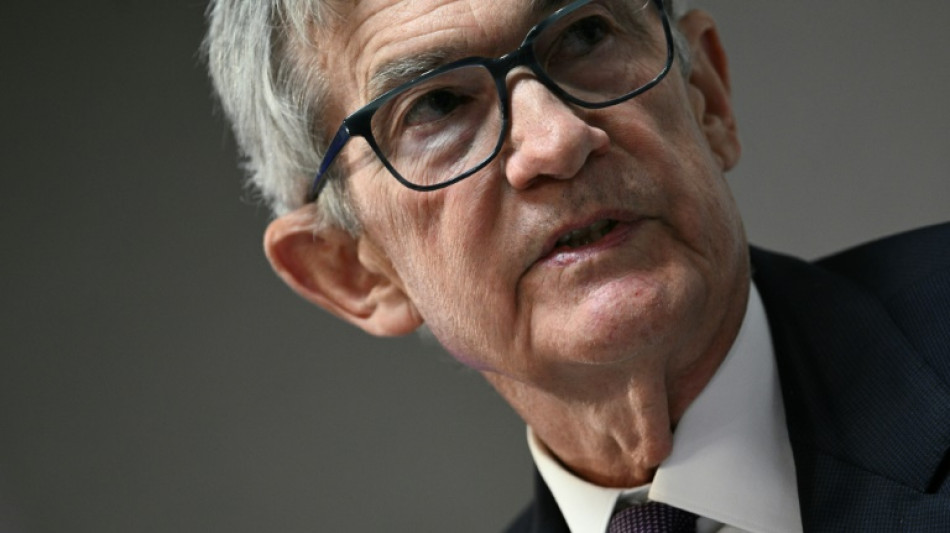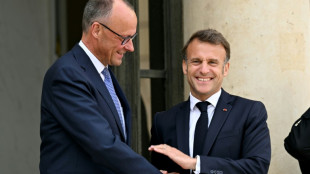
| RBGPF | 4.34% | 65.86 | $ | |
| CMSC | 0.22% | 22.109 | $ | |
| BTI | -0.62% | 44.285 | $ | |
| GSK | -1.08% | 37.1 | $ | |
| AZN | -0.09% | 70.2 | $ | |
| SCS | 0.7% | 9.94 | $ | |
| BCC | 0.27% | 87.715 | $ | |
| NGG | 0.09% | 72.367 | $ | |
| CMSD | 0.69% | 22.466 | $ | |
| RYCEF | 0.38% | 10.43 | $ | |
| RIO | 1.01% | 60.41 | $ | |
| BCE | -0.12% | 21.565 | $ | |
| JRI | 0.38% | 13.1 | $ | |
| BP | -1.09% | 28.095 | $ | |
| VOD | -1.84% | 9.495 | $ | |
| RELX | -0.55% | 54.63 | $ |
No rate cuts expected from US Fed facing 'unfavorable' conditions

The US Federal Reserve faces a tough choice Wednesday as it contends with President Donald Trump's tariff rollout: Prioritize tackling inflation by holding interest rates high, do nothing, or stimulate growth and employment by cutting them?
Analysts and investors overwhelmingly think the Fed will choose to sit tight, preferring to wait and see how the new levies affect the US economy before moving on rates.
"It's an unfavorable mix for the Federal Reserve," Nationwide chief economist Kathy Bostjancic told AFP.
"They're going to see upward price pressures at the same time when economic growth is slowing," she said. "And then they'll have to put a weight on what do they believe?"
The US central bank has a dual mandate from Congress to act independently to achieve stable prices and maximum sustainable employment, which it does mainly by raising and lowering the level of its key short-term lending rate.
That acts as either a throttle or a brake for demand in the US economy, and feeds through into borrowing costs for everything from car loans to mortgages.
Futures traders see a probability of more than 95 percent that the Fed will make no cuts this week, according to data from financial services company CME Group.
- 'Decisive evidence' -
Last month, Trump introduced steep levies on China and lower "baseline" levies of 10 percent on goods from most other countries, sparking weeks of turbulence in the financial markets.
The White House also introduced higher tariffs on dozens of other trading partners, and then abruptly paused them until July to give the United States time to renegotiate existing trade arrangements.
Data published in recent weeks point to an economic contraction in the first quarter of the year, as consumers and businesses stocked up on imports ahead of the introduction of the new measures.
At the same time, the unemployment rate has hovered close to historic lows, and the inflation rate has trended towards -- but remained just above -- the Fed's long-term target of two percent.
"We continue to think that Fed officials will be willing to 'look through' tariff related goods inflation and cut policy rates to support the labor market," economists at Citi bank wrote in a recent investor note.
"But that will not occur until they see decisive evidence in hard data that labor markets are loosening," they added.
Other analysts, including those at Deutsche Bank, expect the Fed will pause for longer to see how the economic picture unfolds over the coming months.
If, as is widely expected, the Fed sits tight this week, its baseline rate will remain at between 4.25 percent and 4.50 percent, where it has sat since December 2024.
- 'Neither good nor bad enough' -
"Incoming data are neither good nor bad enough to force the FOMC to reveal its intentions," Steve Englander, Standard Chartered bank's head of North America macro strategy, wrote in a note to clients, referring to the bank's rate-setting Federal Open Market Committee.
Fed Chair Jerome Powell will likely try to make "very little news" during his regular press conference after the rate decision is published, said Bostjancic from Nationwide.
Powell will likely face additional questions about the Trump administration's support for his leadership of the independent central bank, given public criticism leveled at him and the Fed by senior government officials -- including the president.
"He should lower them," Trump said of Powell and the interest rates in an interview published over the weekend, repeating his past criticism of the Fed chair while insisting he had no plans to try to fire him before his term ends next year.
"By commenting on publicly on what the Fed should do, they potentially undermine...the public's perception of the institution's commitment to price stability," former Fed economist Rodney Ramcharan wrote in a note shared with AFP.
"If the Fed were to cut rates, markets could perceive that decision as 'political' rather than a reaction to actual economic conditions," he added.
M.Michel--PS

 London
London

 Manchester
Manchester
 Glasgow
Glasgow
 Dublin
Dublin
 Belfast
Belfast
 Washington
Washington
 Denver
Denver
 Atlanta
Atlanta
 Dallas
Dallas
 Houston Texas
Houston Texas
 New Orleans
New Orleans
 El Paso
El Paso
 Phoenix
Phoenix
 Los Angeles
Los Angeles



